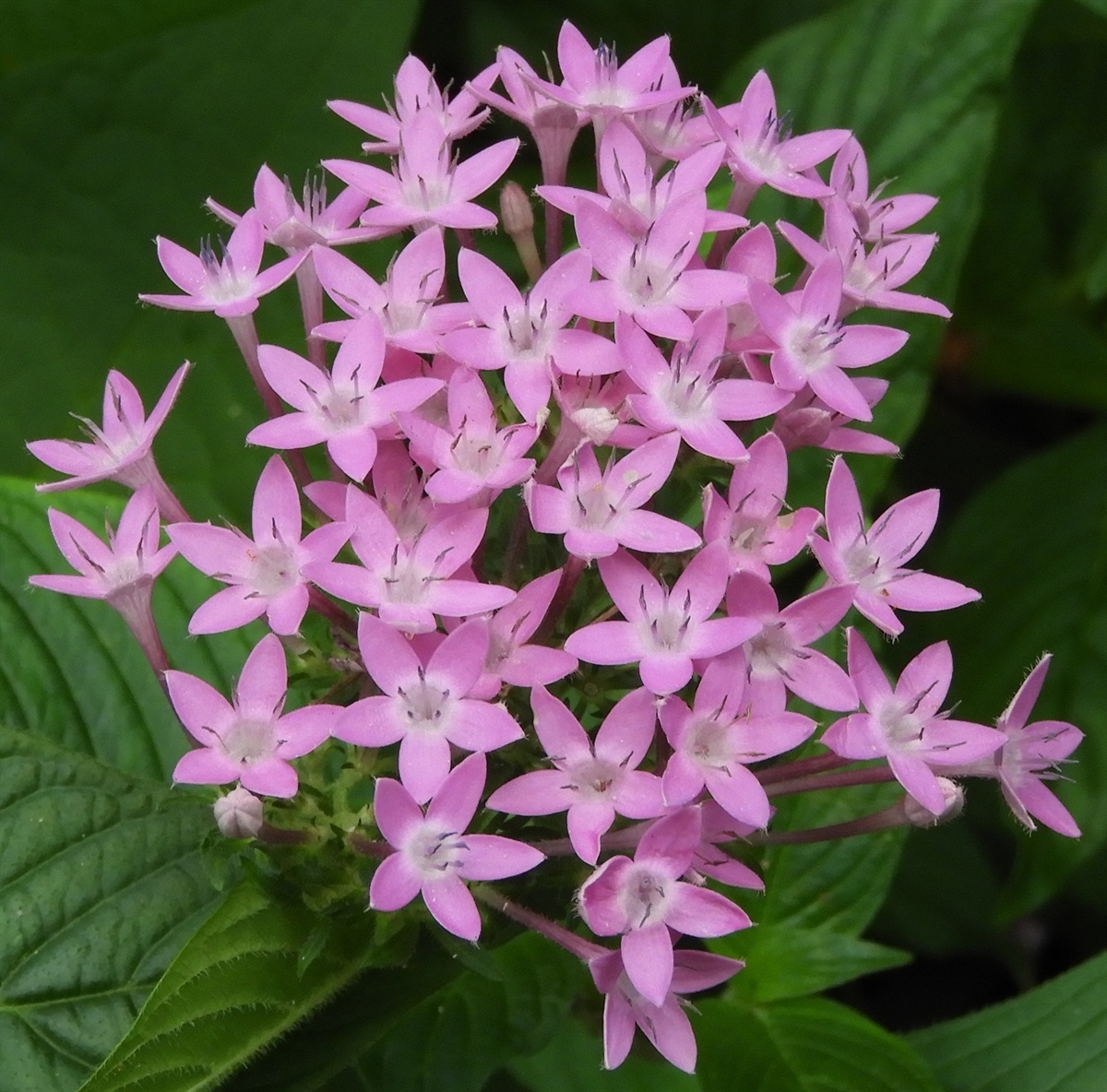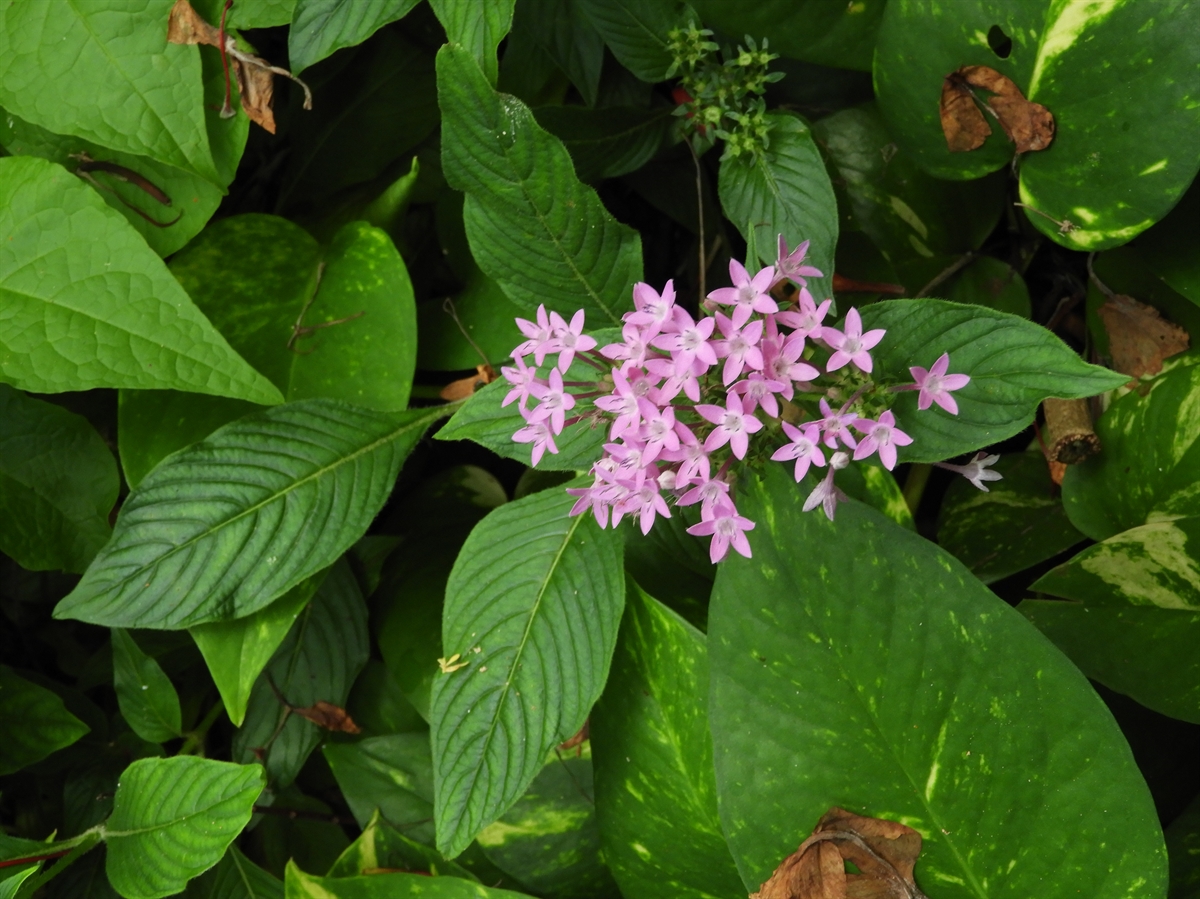Habit: Pentas lanceolata grows as a herbaceous becoming woody perennial to 1 m in height. The leaves are arranged oppositely with linear wire like interpetiolar stipules at the slightly winged petiole base. The leaves are to 13 cm in length, ovate to obovate to elliptic, pubescent with an entire margin and an acute/acuminate leaf apex and tapering along the petiole at its base.
The complete, perfect, actinomorphic, pubescent flowers are arranged in terminal cymes. There are 5 partially fused green, pubescent sepals in the calyx. There are 5, partially fused, elongate, white to pink to red, pubescent petals in the corolla. The throat of the flower is pubescent. There are 5 stamens adnate to the corolla. The ovary is inferior with 2 locules containing numerous ovules. The fruit is a capsule at maturity.
Habitat: Pentas lanceolata grows in Human Altered environments (yards and gardens).
Distribution: Pentas lanceolata is NOT native to the Lucayan Archipelago. It is native to central and eastern Africa, Madagascar, and the Saudi Arabian Peninsula.
Medicinal/Cultural/Economic usage: Pentas lanceolata is not known to be used medicinally in Lucayan Archipelago.
Pentas lanceolata is widely used in the horticultural trade for its showy colorful flowers.

